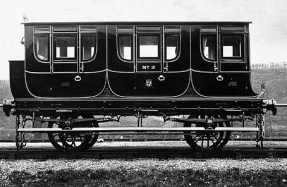
At the beginning of the nineteenth century political and social power in Britain lay largely with an hereditary elite consisting of men whose wealth was based on their ownership of land. This elite included a small and highly class-conscious group of titled aristocratic grandees often enjoying vast landholdings and wealth and power on a corresponding scale. Somewhat lower in the social hierarchy but generally sharing the same values and attitudes was a larger layer consisting of smaller but still socially prestigious landowners. They can be loosely described as the ‘squirearchy’ and they exercised much influence, acting as Justices of the Peace, for example, in what was still a predominantly rural society.

The ascendency of the tiny landowning elite had become established over time and their power was almost absolute throughout much of the countryside and in many established county and market towns. From the middle of the eighteenth century, however, Britain began to reel under the impact of the far-reaching changes associated with industrialisation and urbanisation. The hegemony of the landowners was directly threatened by the rising industrial and commercial bourgeoisie who wanted that share of political and social influence to which they thought their growing wealth and vital role in the economy entitled them. Essentially, this was a class struggle between the traditional ruling elite and the thrusting leaders of a progressive and vigorous new urban and industrialised order basing its wealth especially on coalmining and activities in iron, textiles and other manufacturing industries.

Some landowners responded enthusiastically to the opportunities for personal enrichment which occurred when, for example, they were fortunate enough to own land from which minerals could be lucratively extracted. They were prepared to work with the industrial capitalists to mutual benefit Many landowners were even prepared to create financially advantageous marriages for their sons to the daughters of plutocrats of lower social origins who would bring generous dowries with them. During the nineteenth century, the old landowning elite and the nouveau riche at least partially merged to form a new ruling elite. This social transformation did not take place without conflict A major cause of contention was around issues provoked by the coming of the railways.
The railways constituted a major challenge to the old landowning hierarchy. Railway promoters had the right of compulsory purchase for the land they required once a railway Bill became law. Many landowners saw this as an attack on their absolute right to possess and benefit from the ownership of their own property. The status of the country landowner was symbolised by the extent of his private estate, the rent rolls it produced and the house it contained. The boundaries of his demesne were designed to exclude all but his servants, invited visitors and those on estate business. Within these boundaries the landowner was lord of all he surveyed. He revelled in the personal seclusion and






